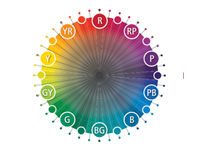If anybody asks what is the most exciting and interesting sector of textile, based on today, it will be indicated to Aerospace. This particular technology has approached textiles to fulfil a very common but significant role. Generally a long time ago textile broke the taboo of only known clothing or apparel. Now this article will find the answer to the question, “ How do textiles meet with aerospace?”
Aerospace textile is a significant part of technical textiles. It includes a gigantic range of materials that are completely designed to meet all the extraordinary demands of aviation and space exploration.
The most common usage of aerospace textiles can be seen in a spacesuit, nylon tire cords, air bags, carpets, rotor blades, wings, fuel tanks, circuit boards, aircraft upholstery, para-suits, space shuttle, and the list is never-ending.

How was it started?
According to history, textile wasn’t introduced in the aerospace industry by clothing. Fabric-covered wings were common in early aircraft, which were lightweight as well as flexible solutions. Later different sophisticated materials are used to enhance the performance and spread the usage of textiles in spacecraft.
Properties and materials:
Here must be noted that these textiles are engineered to the following characteristics:
· Intense vibration
· Rapid fluctuation of Atmospheric pressure
· Any variations in temperature
· Strong resistance to sudden strength & and harmful radiation
· Good resistance to abrasion
· Malleability etc.
To provide those properties fabric made from known fibers like carbon, Kevlar, nylon, and alumina-boria-silica fibers are used. Other than those special fibers like glass fiber which are made exclusively from E-glass or Electrical Grade.
But the making of these clothes is quite different from regular ones. Besides fibers, all the suits contain some specific materials like advanced composites, smart textiles embedded with sensors, and other functionalities.
How come this section is one of the most exciting?
As they said, researchers are always thirsty for new things. With no exception, innovative materials are explored to make aerospace belongings more lightweight and technical. Even some newly invented spacesuits have self-healing properties. Smart textiles with embedded sensors can monitor structural health in real time, allowing for proactive maintenance and improved safety. But one of the most ground breaking inventions is three-dimensional (3D) textile composites. For the past 30 years, 2D layered fibre structures have been successful in aircraft. However, this has limited mechanical properties and manufacturing boundaries. But 3D laminates are working with all the issues to give a better result. In a word, the future of textiles in aerospace holds exciting possibilities.
Market Outlook:
From using wings to smart textiles, technological improvement has risen to a bigger scenery. In today’s world where we look for fuel-efficient and lightweight aircraft, the aerospace industry is investing heavily in research and development of cutting-edge textile solutions. Though there is no exact aerospace market value with the rapid inventions, by considering the applications in commercial aviation, defence, and space exploration a bigger scenario is imagined worldwide.




